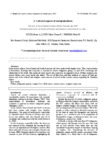Please use this identifier to cite or link to this item:
http://www.alice.cnptia.embrapa.br/alice/handle/doc/941077| Title: | Cultural aspects of meliponiculture. |
| Authors: | SOUZA, B. A.  LOPES, M. T. R.   PEREIRA, F. M.   |
| Affiliation: | BRUNO DE ALMEIDA SOUZA, CPAMN; MARIA TERESA DO REGO LOPES, CPAMN; FABIA DE MELLO PEREIRA, CPAMN. |
| Date Issued: | 2012 |
| Citation: | In: VIT OLIVIER, P.; ROUBIK, D.W. (Ed.). Stingless bees process honey and pollen in cerumen pots. Caracas: Universidad de Los Andes, 2012. |
| Pages: | 6 p. |
| Description: | Some ancient cultures from Central and South American had close contact with stingless bees. Their representation in decorations, drawings and sculptures is common in various indigenous groups, as part of its cosmology and relationship to the world. This group of social insects also represents an important source of food resources and income (honey, wax, resin, larvae and pollen). The use of these bees and their products as sources of food and income and in the cultural and religious expression are reviewed in this chapter, mainly regarding the Brazilian culture. |
| NAL Thesaurus: | stingless bees |
| Keywords: | Cultura Grupos indígenas Abelhas sem ferrão Fonte de alimento Culture Indigenous groups Food source |
| Type of Material: | Parte de livro |
| Access: | openAccess |
| Appears in Collections: | Capítulo em livro científico (CPAMN)  |
Files in This Item:
| File | Description | Size | Format | |
|---|---|---|---|---|
| 2culturalaspectsofmeliponiculture.pdf | 218.15 kB | Adobe PDF |  View/Open |









